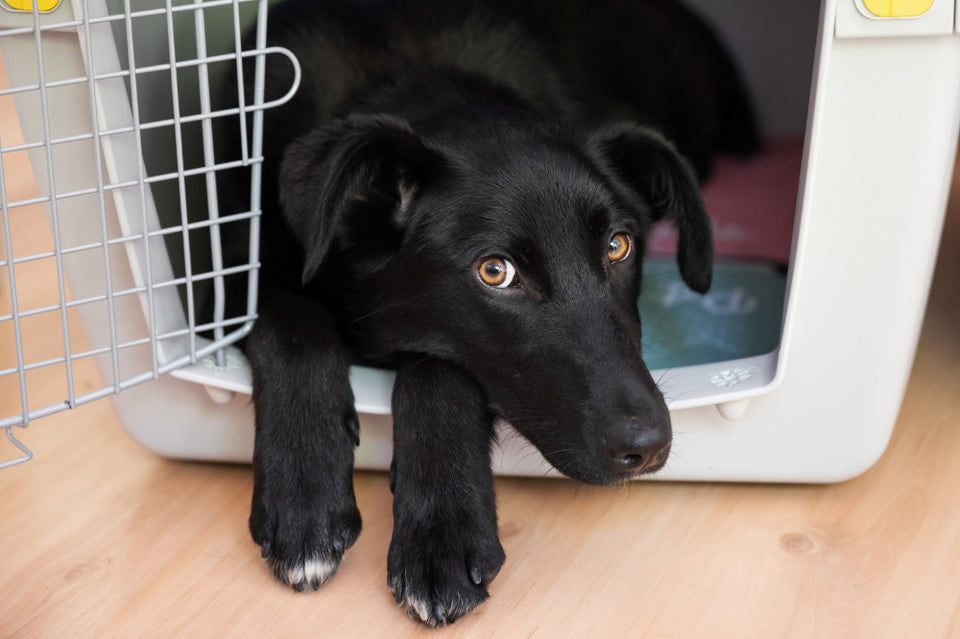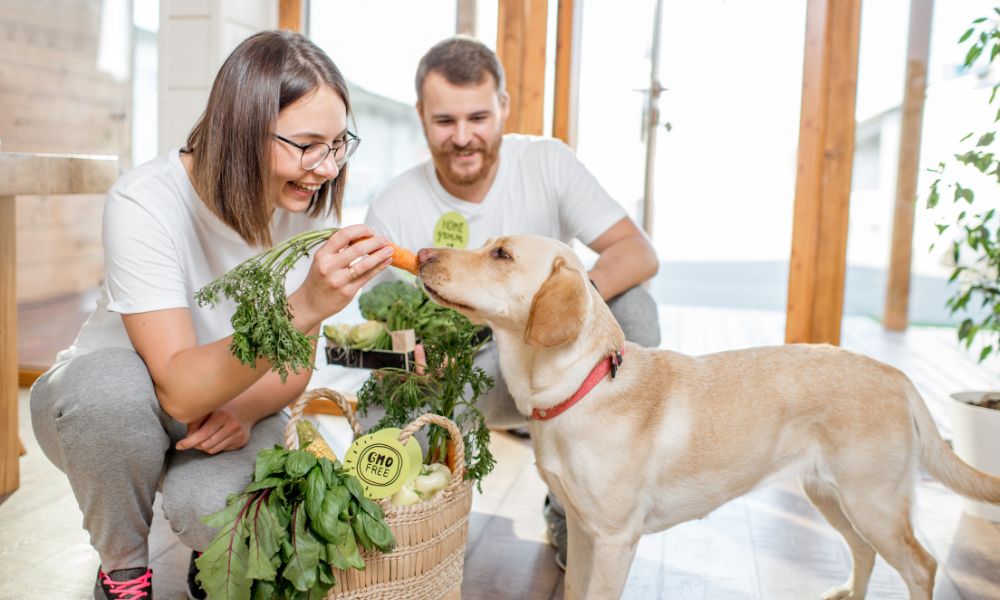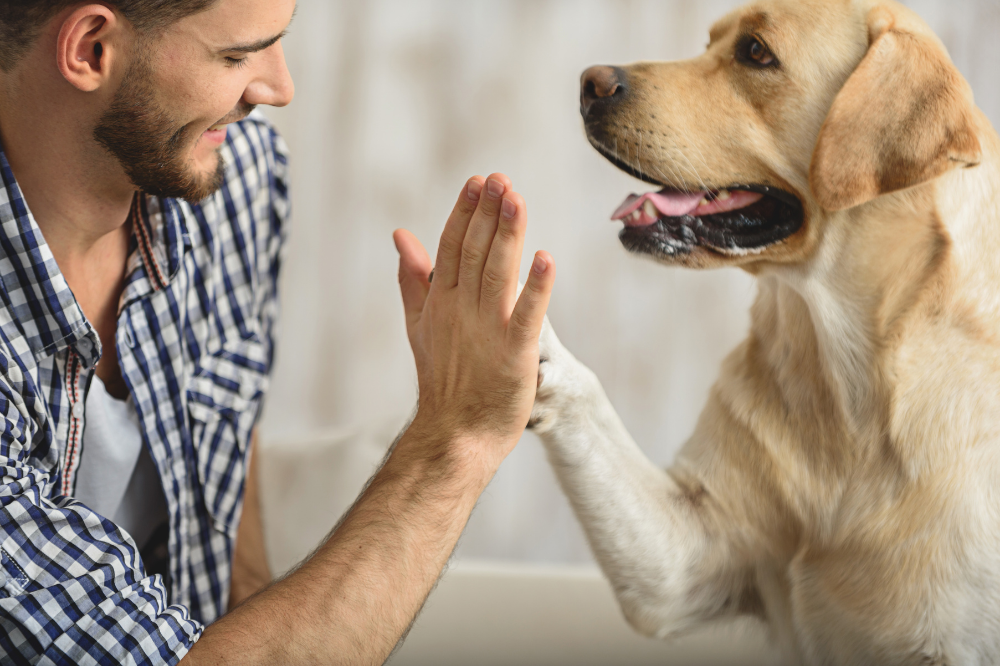
12 Reasons Why Crate Training is an Important Skill to Teach Your Dog

Crate training sometimes gets a bad rap, but the ability to relax inside a crate or carrier is an important skill to teach your dog. You might think that crate training only offers benefits for pet parents. And while it’s true that pet parents can benefit a lot from using a crate, so can your pooch, as long as it’s used properly. Keep reading to learn about the benefits of crate training your dog, some of which might surprise you.
Busting Common Myths About Crate Training
Unfortunately, a lot of people refuse to crate train their dogs because they believe it’s cruel. They see crates as “doggy jail” and think they’re too restrictive. But just like children, dogs thrive on boundaries. In the wild, canines look to the pack leader to set rules and boundaries for them. As a pet parent, it’s your job to provide boundaries for your fur kid, which helps them feel safe and actually gives them more confidence. Dogs also have a denning instinct. If he’s had proper crate training, Fido won’t see his crate as a jail cell, but as a cozy den where he feels safe enough to relax and let his guard down.
On the flip side, another common misconception is that using a crate is beneficial for all dogs, which simply isn’t true. A dog who’s been traumatized by improper use of a crate shouldn’t be crated without first going through extensive conditioning to get her over her trauma and any fear associated with a crate. Similarly, dogs with severe separation anxiety may panic and harm themselves trying to escape if they’re confined to a crate while left alone. And some dogs simply don’t take well to crate training.
Another common concern is that it’s cruel to crate a puppy at night. It certainly feels mean when your puppy cries to be let out of their crate. But a new puppy will most likely cry and carry on at night no matter where you put them until they adjust to their new life without their littermates. Crate training at night will help your puppy adjust faster by providing them with security and consistency. And it will also prevent nighttime accidents and keep them from potentially harmful activities while you sleep.
Finally, one of the biggest crate training myths is that small breeds don’t need any crate training because you can simply hold them or tuck them into small spaces. But Chihuahuas can benefit from crate training as much as Great Danes and every size dog in between. For one thing, your tiny pooch is fragile and more vulnerable to danger than bigger dogs. Unless you enjoy wearing them to keep them out of harm’s way, you’ll be glad for the ability to stow them in a crate to keep them safe. But as you’ll see below, all the crate training benefits listed here apply to dogs of all sizes.
Benefits of Crate Training Dogs and Puppies
A crate provides your dog with their own space.
Far from being seen as a jail, if crate training is done right, your pup will see their crate as their own room, a safe space where they can hang out, relax, chew on a toy or bully stick, and sleep with no worries that someone might mess with them or take their toy away. They may even prefer sleeping all night inside their crate because it makes them feel more secure. Once your fur kid is potty trained and past their chewing phase, you can make their space even more cozy and comfy by upgrading it with luxury dog crate bedding that will make them reluctant to leave.
A crate can keep your dog out of trouble.
When your dog is in their crate, you know they’re not tearing up the house, digging in the trash, shredding the toilet paper, eating something toxic, getting into fights, getting lost, running into traffic or any other of the myriad ways dogs can bring harm on themselves. While you can’t lock them up all the time just to keep them safe, sending them to their crate during times when people will be coming and going will give you peace of mind and eliminate any worry about them escaping because someone accidentally left the door open.
Using a crate can make your guests more comfortable.
Not every human who comes to visit will appreciate your adorable doggo’s overtures of friendship. Even guests who get along well with dogs may have allergies that can be exacerbated if your pup gets too close, or they may bring along kids who don’t know how to play well with furry friends. And the cable guy can get his work done a lot easier if he’s not worrying about finding out if your ferocious protector’s bite is worse than their bark. Crating your pup when you have company will help your guests feel at ease while helping Fido be on his best behavior.
A crate can help your dog feel more comfortable with houseguests.
Not all dogs are social butterflies. Some dogs are wary around strangers or people they don’t know well. If you’re having a party or hosting a lot of people, all those strangers running around could make your sweet pup want to run and hide. A crate can give them a designated safe space to hide out while still allowing them to watch the action and keep you in sight.
Crates help keep your dog safe in an emergency.
If you need to evacuate your home in an emergency, you’ll have a much easier time if your fur baby is contained inside a crate or carrier. Not only will it make rounding them up and transporting them simpler, but they’ll also be protected from broken glass, debris and contaminants. Also, some emergency shelters or hotels might not admit your pup if they’re not confined to a crate. And in case of a fire, it will be easier for rescuers to locate and save your dog if they’re in their crate and not hiding in an unknown location.
Crates can help prevent separation anxiety.
While leaving your dog home alone in a crate if they already suffer from separation anxiety isn’t a good idea, letting them hang out in their crate while you spend time outside or in another part of the house is good practice for being separated from you. This is a good way to get them used to being on their own so they won’t freak out if you need to leave them home alone for longer periods of time. If you start this practice while they’re at a young age, you’ll likely prevent them from developing separation anxiety in the first place.
Crates can help with other forms of anxiety.
Is your pooch afraid of thunderstorms or loud noises? They’ll probably feel safer hanging out inside their crate during a storm or the neighborhood fireworks show, especially if you cover the crate with a dog blanket to help muffle the sound and block out the flashing lights.
Crates are useful for potty training puppies.
By the time they’re old enough to potty train, dogs have an innate aversion to soiling the space where they sleep. They’ll usually do their best to hold it until they’re let out of the crate to pee. This is why crates are such a helpful tool when it comes to house training puppies. Keeping your baby pup crated when you can’t supervise them will help prevent accidents, and also help them get on a schedule and learn quickly where they’re supposed to go. Just don’t leave them too long, or they may not be able to help messing the crate. A good rule of thumb for how long you can leave your puppy without a potty break is one hour for each month of their age — but dogs of any age should never be expected to hold it for more than eight hours.
Crates help with training and obedience.
Training sessions, playtime and socialization can leave your puppy or your adult dog feeling overstimulated. Sending them to their crate after a period of excitement can help them calm down, decompress and process what they’ve learned. And while the crate should never be used as a form of punishment, it’s entirely appropriate to send your pup to their crate for a timeout when they’re acting over excited and exhibiting unwanted behaviors like overzealous jumping and nipping.
Crates can provide comfort for older dogs.
Crates can help make life easier for senior dogs. One that’s tucked away in a quiet part of the house can give your older dog a place to get some peace and quiet when all they want to do is nap. And if your aging doggo loses their vision, hearing or mobility, or if they tend to get confused easily, a crate could be a lifesaver.
A crate can make travel with your dog safer and easier.
An unrestrained dog can not only be a huge distraction while driving, but can also become a flying missile in a car accident. Keeping your pup in a crate is one of the safest ways to transport them by car. If you’re traveling by plane, they’ll be required to ride in a crate or carrier, no matter their size. And even dog-friendly hotels generally require dogs to be crated if they’re left alone in your room. A travel-ready crate for your dog will always give you a place to put them and keep them safe and will remove the hassle of having to figure out what to do with them when you can’t take them everywhere you go.
Crate training can prepare your dog for when there’s no choice.
Sooner or later, your fur kid will probably have to stay overnight at the vet, or you may need to board them at a kennel. Groomers and doggie daycare might also need to place your pup in a crate for a short time. If you’ve already gotten them used to spending time in a crate, it won’t be a big deal for them when a stranger crates them in a strange place. Otherwise, lack of crate training could make an already stressful situation worse for your dog.

Is there a Downside to Crate Training?
Unless your dog suffers from extreme anxiety or trauma, there really are no cons to proper crate training. But the key word here is proper. Crates are a tool, and while they can be extremely beneficial, they can be harmful if misused. Here’s what not to do when it comes to crate training and using a crate with your dog:
-
Don’t use a crate that’s too small.
Your dog should have room to stand up all the way, turn around and stretch out comfortably while lying down.
-
Don’t use a crate that’s too large.
If there’s enough room for your pup to use the bathroom in the crate without messing up their sleeping spot, you can bet that they’ll do it sooner or later.
-
Don’t leave them in the crate for extended periods.
Adult dogs shouldn’t be left in a crate for more than four hours; puppies shouldn’t be left longer than they can hold their pee. And a crate isn’t for stashing your dog so you can forget about them. Dogs need mental enrichment as much as they need physical exercise, and keeping them crated too long or too often is a recipe for behavioral problems.
-
Don’t use their crate for punishment.
While it’s fine to send your overexcited pooch to their crate for a time out, don’t associate crate time with punishment. Don’t withhold treats or toys that they would normally get inside the crate, and don’t leave them longer than necessary to “teach them a lesson.”
-
Don’t leave a leash or collar on inside the crate.
Leashes, collars and tags can get snagged on the bars, creating a choking hazard.
The point of crate training isn’t so that you can leave your dog crated all the time. But taking the time to properly crate train your dog and get them comfortable with spending time in a crate will provide them with a valuable life skill that will be transferable to a lot of different situations — and it could even save their life.
Share this article
written by


